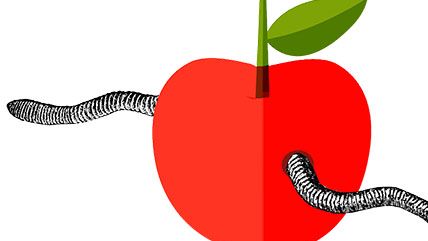A Better Chance for Native Education

"It's just the epitome of broken," former Secretary of Education Arne Duncan said of the Bureau of Indian Education's abysmal track record with Native American students. "Just utterly bankrupt." After Betsy DeVos' recent confirmation to the post Duncan held under Barack Obama, and with the GOP holding majorities in both houses of Congress, the federal government has a rare opportunity to accomplish some much-needed reforms to help children trapped in this system.
The Bureau of Indian Education (BIE) receives funding from the interior, agriculture, and education departments, serving 48,000 students across 23 states. According to the Government Accountability Office, BIE day schools spent over $16,394 per pupil during the 2009–2010 school year, far above the national public school average of $10,295 per pupil. Despite this, BIE schools are some of the worst in the country, with a graduation rate barely topping 50 percent. In reading, students score an average of two grade levels lower on the National Assessment for Educational Progress than their Native counterparts in non-BIE schools. What's more, these students are disproportionately too poor to access better options.
As a school district under federal jurisdiction, the BIE is an ideal place for the new administration to put school choice into action without interfering with local control. Last April, Sen. John McCain (R–Ariz.) introduced the Native American Educational Opportunity Act, which would give Education Savings Accounts (ESAs) to eligible students attending BIE schools. Such individualized accounts give families control over the education dollars that would otherwise fund their children to attend public schools. And they're more flexible than vouchers, since they can pay for any approved educational expense, from private school tuition to tutoring, educational software, even therapy for students with special needs.
"School choice is a foreign concept to many tribal communities," testified former Arizona state Sen. Carlyle Begay in support of the bill, "yet it will play an important role in changing the outlook of education on reservations." Begay, a member of the Navajo nation, was educated in BIE schools. As a state senator, he was key to making students on Arizona Native American reservations eligible for the state's ESA. A longtime BIE reform advocate, Begay argues that school choice can help tribal communities reach the cultural self-determination they strive for.
The push for Indian ESAs may now get a second wind. Education Secretary DeVos supported McCain's bill last year, arguing it would "serve as a lifeline to students trapped in literally some of the worst schools in America—it is morally unacceptable to stand by and accept the status quo."
This article originally appeared in print under the headline "A Better Chance for Native Education."


Show Comments (16)